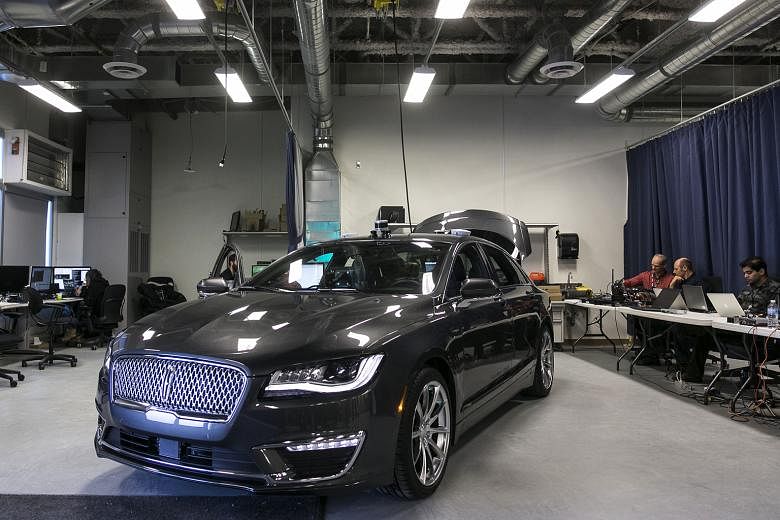As Ford has been developing self-driving cars, it has noticed a problem during test-drives: Engineers monitoring the robot rides are dozing off.
Company researchers have tried to rouse the engineers with bells, buzzers, warning lights, vibrating seats and shaking steering wheels. They have even put a second engineer in the vehicle to keep tabs on his human counterpart.
No matter - the smooth ride was just too lulling and engineers struggled to maintain "situational awareness", said Mr Raj Nair, Ford's product development chief. "These are trained engineers... But it's human nature that you start trusting the vehicle more and more and that you feel you don't need to be paying attention."
The struggle to prevent snoozing-while-cruising has yielded a radical decision: Ford will venture to take the human out of the loop by removing the steering wheel, brake and gas pedals from its driverless cars debuting in 2021. That sets Ford apart from most automakers, including Audi and General Motors.
BMW, Mercedes-Benz and Volkswagen's Audi plan to roll out semi- autonomous cars starting next year that require drivers to take over with as little as 10 seconds' notice. On a scale embraced by the United States government, these cars would qualify as Level 3 - more capable than cars where drivers do everything, but short of full automation.
Ford plans to skip that level. It has aligned with Alphabet's Waymo, which made similar discoveries related to human inattention while researching Google's driverless car.
Their views show there is a rift developing among the creators of autonomous cars over what role - if any - humans should play when cars begin driving themselves.
Most automakers believe that, at least initially, people must supplant the robot to avoid crashes in complex situations. Others contend that asking an inattentive human to respond in seconds to a life-or- death situation is a recipe for disaster.
A US Transportation Department policy last year adopted the Society of Automotive Engineers automated driving levels. Level 0 vehicles require constant human control, while Level 5 vehicles will need no help from humans. Level 3 is what the society calls "conditional automation", in which "the human driver will respond appropriately to a request to intervene".
"We like the levels," Mr Scott Keogh, president of Audi of America, told reporters in Las Vegas this year. "It helps with consumer understanding and getting trust built into the marketplace, as opposed to going straight to the moonshot right off the bat."
Next year, Audi will introduce Traffic Jam Pilot, a Level-3 system that allows hands-free driving at speeds of up to 56kmh. If the car's sensors detect a situation that requires human help, it will give the driver 10 seconds to get his hands on the wheel, eyes on the road and foot on the pedals. If the driver does not respond, the car will slow to a stop.
Other automakers, such as Nissan and Honda, have systems coming that will give drivers 30 seconds to prepare to re-engage and that can pull to the side of the road if the car does not detect human hands on the wheel. Volvo, which is siding with Ford and Waymo, will deploy a self-driving system in 2020 that will not require human intervention.
Legal liability could be leading most automakers to put the wheel in the driver's hands in an emergency, said Mr Joe Vitale, global automotive leader for consultant Deloitte.
"With a vehicle crash when it's operating in Level 3, I'm sure manufacturers will believe the consumer is responsible because they have their hands on the wheel and they've been alerted," he said.
Volvo has pledged it will accept responsibility for any crashes by its self-driving vehicles.
One matter both sides agree on is that too many requests for human intervention could wreck the autonomous experience. It also would undermine the value of having an automated chauffeur, according to Mr Mark Fields, Ford's chief executive officer.
BLOOMBERG

